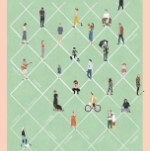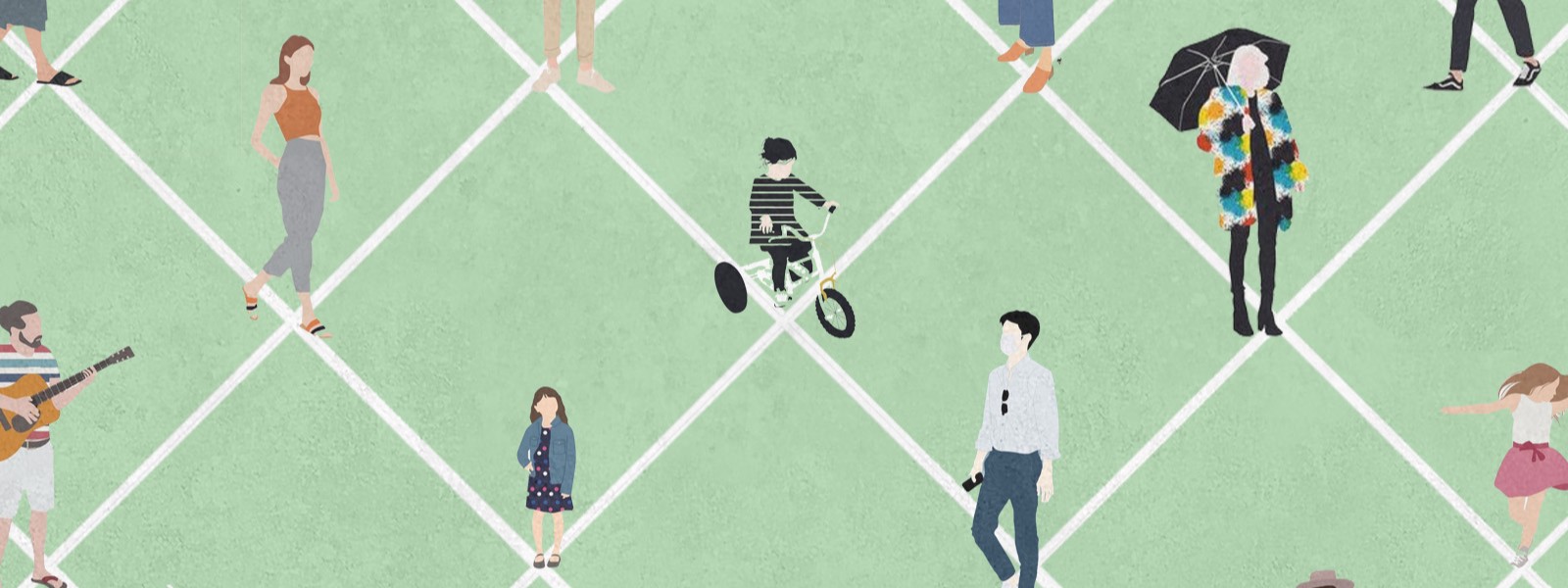 |
Ombretta Romice & Ashraf M. SalamaStudents: Augustijn van Gaalen, Dominik Jakub Franczek, Jessica Gaudi Cowan, Louise Ashleigh Mencnarowski, Ryan Alexander Reid, Samantha Auld, Scott Whorlow, Asra Shakor, Laura Popa, Ralitsa Slavcheva, Shinjini Basu, Viktoriya Vaskova, Viraj Khandalkar.
|
University of Strathclyde
Department of Architecture
- The Future is Here: @Strathclyde - Student Architectural and Urban Responses to the Covid 19 Condition
Students of our Department have a long-standing tradition of engagement with important current issues; they take their responsibility towards society and the environment extremely seriously. It was not surprising then to see how many of them decided to tackle the current pandemic, amongst many other important themes, in their final research piece before getting their Masters in September 2020.
Around 13 out of almost 100 students studied Covid-19 directly, whilst many more reflected on it as part of their work; they focussed on its impact on people and their relationships with space, they put it in the context of previous pandemics to understand practices and lessons, reflected on its potential long-term repercussions on how we produce, use and manage our everyday environments. Others looked at the first immediate consequence of the spread of this virus – the lockdown – to understand how the spaces that they will be called to design in their imminent careers, our housing and neighbourhoods, have managed in maintaining a good quality of life for everyone. Seven theses in particular have developed ideas which have scope for development, and this report describes them in detail in three main areas:
Tools for a Responsive Urbanity
Neighbourhood Preparedness in Managing Lockdowns and Supporting Community
Adapting Learning Architecture and Design Practices to a Post-Pandemic Context
The main message of this collection is that architecture and urbanism should play an important part in responding to the pandemic condition at both academic and professional levels, now and in the future. The introductory section sets the stage for contextualising the discussion on the primary underpinnings of the pandemic and virus spread and highlights the need for responsive approaches. The selection of detailed and short student contributions is then presented systematically while offering glimpses of premises, approaches, and key findings they have reached. Two concluding sections introduce key implications of the students’ work while calling for a trans-disciplinary research and action and offering an outline of the range of possibilities and future areas in built environment research.
The students’ work portrayed in this report are:
Augustijn van Gaalen, Dominik Jakub Franczek, Jessica Gaudi Cowan, Louise
Ashleigh Mencnarowski, Ryan Alexander Reid, Samantha Auld, Scott Whorlow,
Asra Shakor, Laura Popa, Ralitsa Slavcheva, Shinjini Basu, Viktoriya Vaskova,
Viraj Khandalkar.
All students belong to the Department of Architecture with the exception of Augustijn van Gaalen who wrote his thesis in the School of Government & Public Policy within the Faculty of Humanities & Social Sciences, under supervision of Prof Scott Cunningham and in collaboration with Ombretta Romice.
The report has been produced by Ombretta Romice, coordinator of the Masters Thesis project in the MArch in AAD and MScUD, and Ashraf M. Salama, Director of Research.
